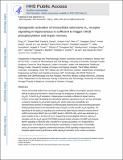| dc.contributor.author | Li, P. | |
| dc.contributor.author | Rial, D. | |
| dc.contributor.author | Canas, P. M. | |
| dc.contributor.author | Yoo, J.-H. | |
| dc.contributor.author | Li, W. | |
| dc.contributor.author | Zhou, X. | |
| dc.contributor.author | Wang, Y. | |
| dc.contributor.author | van Westen, G. J. P. | |
| dc.contributor.author | Payen, M.-P. | |
| dc.contributor.author | Augusto, E. | |
| dc.contributor.author | Gonçalves, N. | |
| dc.contributor.author | Tomé, A. R. | |
| dc.contributor.author | Li, Z. | |
| dc.contributor.author | Wu, Z. | |
| dc.contributor.author | Hou, X. | |
| dc.contributor.author | Zhou, Y. | |
| dc.contributor.author | PIJzerman, Ad | |
| dc.contributor.author | Boyden, Edward Stuart | |
| dc.contributor.author | Cunha, R. A. | |
| dc.contributor.author | Qu, J. | |
| dc.contributor.author | Chen, J.-F. | |
| dc.date.accessioned | 2016-07-13T16:56:34Z | |
| dc.date.available | 2016-07-13T16:56:34Z | |
| dc.date.issued | 2015-02 | |
| dc.date.submitted | 2014-10 | |
| dc.identifier.issn | 1359-4184 | |
| dc.identifier.issn | 1476-5578 | |
| dc.identifier.uri | http://hdl.handle.net/1721.1/103590 | |
| dc.description.abstract | Human and animal studies have converged to suggest that caffeine consumption prevents memory deficits in aging and Alzheimer’s disease through the antagonism of adenosine A2A receptors (A2ARs). To test if A2AR activation in the hippocampus is actually sufficient to impair memory function and to begin elucidating the intracellular pathways operated by A2AR, we have developed a chimeric rhodopsin-A2AR protein (optoA2AR), which retains the extracellular and transmembrane domains of rhodopsin (conferring light responsiveness and eliminating adenosine-binding pockets) fused to the intracellular loop of A2AR to confer specific A2AR signaling. The specificity of the optoA2AR signaling was confirmed by light-induced selective enhancement of cAMP and phospho-mitogen-activated protein kinase (p-MAPK) (but not cGMP) levels in human embryonic kidney 293 (HEK293) cells, which was abolished by a point mutation at the C terminal of A2AR. Supporting its physiological relevance, optoA2AR activation and the A2AR agonist CGS21680 produced similar activation of cAMP and p-MAPK signaling in HEK293 cells, of p-MAPK in the nucleus accumbens and of c-Fos/phosphorylated-CREB (p-CREB) in the hippocampus, and similarly enhanced long-term potentiation in the hippocampus. Remarkably, optoA2AR activation triggered a preferential p-CREB signaling in the hippocampus and impaired spatial memory performance, while optoA2AR activation in the nucleus accumbens triggered MAPK signaling and modulated locomotor activity. This shows that the recruitment of intracellular A2AR signaling in the hippocampus is sufficient to trigger memory dysfunction. Furthermore, the demonstration that the biased A2AR signaling and functions depend on intracellular A2AR loops prompts the possibility of targeting the intracellular A2AR-interacting partners to selectively control different neuropsychiatric behaviors. | en_US |
| dc.description.sponsorship | National Institutes of Health (U.S.) (NIH grant NIH (NS041083-11) | en_US |
| dc.description.sponsorship | National Institutes of Health (U.S.) (NIH grant NS073947) | en_US |
| dc.description.sponsorship | United States. Defense Advanced Research Projects Agency (Grant W911NF-10-1-0059) | en_US |
| dc.description.sponsorship | Dr. John T. Macdonald Foundation (Research for Huntington's Disease) | en_US |
| dc.description.sponsorship | Brain & Behavior Research Foundation (NARSAD Independent Investigator Grant) | en_US |
| dc.description.sponsorship | National Basic Research Program of China (973 Project, 2011CB504602) | en_US |
| dc.description.sponsorship | Wenzhou Medical University (Start-up Fund, No. 89211010) | en_US |
| dc.description.sponsorship | Wenzhou Medical University (Start-up Fund, No. 89212012) | en_US |
| dc.description.sponsorship | Zhejiang Sheng (China) (Provincial Special Funds (No. 604161241)) | en_US |
| dc.description.sponsorship | China. Ministry of Health (Key Laboratory of Vision Science, No. 601041241, Special Fund for Building Key National Clinical Resource)) | en_US |
| dc.description.sponsorship | Boston University. School of Medicine (BUSM research fund DTD 4-30-14) | en_US |
| dc.language.iso | en_US | |
| dc.publisher | Nature Publishing Group | en_US |
| dc.relation.isversionof | http://dx.doi.org/10.1038/mp.2014.182 | en_US |
| dc.rights | Creative Commons Attribution-Noncommercial-Share Alike | en_US |
| dc.rights.uri | http://creativecommons.org/licenses/by-nc-sa/4.0/ | en_US |
| dc.source | PMC | en_US |
| dc.title | Optogenetic activation of intracellular adenosine A[subscript 2A] receptor signaling in the hippocampus is sufficient to trigger CREB phosphorylation and impair memory | en_US |
| dc.title.alternative | Optogenetic activation of intracellular adenosine A2A receptor signaling in the hippocampus is sufficient to trigger CREB phosphorylation and impair memory | en_US |
| dc.type | Article | en_US |
| dc.identifier.citation | Li, P., D. Rial, P.M. Canas, J.-H. Yoo, W. Li, X. Zhou, Y. Wang, G.J.P. van Westen, M.-P. Payen, E. Augusto, et al. "Optogenetic activation of intracellular adenosine A2A receptor signaling in the hippocampus is sufficient to trigger CREB phosphorylation and impair memory." Molecular Psychiatry (2015) 20, pp.1339-1349. | en_US |
| dc.contributor.department | Massachusetts Institute of Technology. Department of Biological Engineering | en_US |
| dc.contributor.department | Massachusetts Institute of Technology. Department of Brain and Cognitive Sciences | en_US |
| dc.contributor.department | Massachusetts Institute of Technology. Media Laboratory | en_US |
| dc.contributor.department | McGovern Institute for Brain Research at MIT | en_US |
| dc.contributor.mitauthor | Boyden, Edward Stuart | en_US |
| dc.relation.journal | Molecular Psychiatry | en_US |
| dc.eprint.version | Author's final manuscript | en_US |
| dc.type.uri | http://purl.org/eprint/type/JournalArticle | en_US |
| eprint.status | http://purl.org/eprint/status/PeerReviewed | en_US |
| dspace.orderedauthors | Li, P; Rial, D; Canas, P M; Yoo, J-H; Li, W; Zhou, X; Wang, Y; van Westen, G J P; Payen, M-P; Augusto, E; Gonçalves, N; Tomé, A R; Li, Z; Wu, Z; Hou, X; Zhou, Y; PIJzerman, Ad; Boyden, E S; Cunha, R A; Qu, J; Chen, J-F | en_US |
| dspace.embargo.terms | N | en_US |
| dc.identifier.orcid | https://orcid.org/0000-0002-0419-3351 | |
| mit.license | OPEN_ACCESS_POLICY | en_US |
| mit.metadata.status | Complete | |
